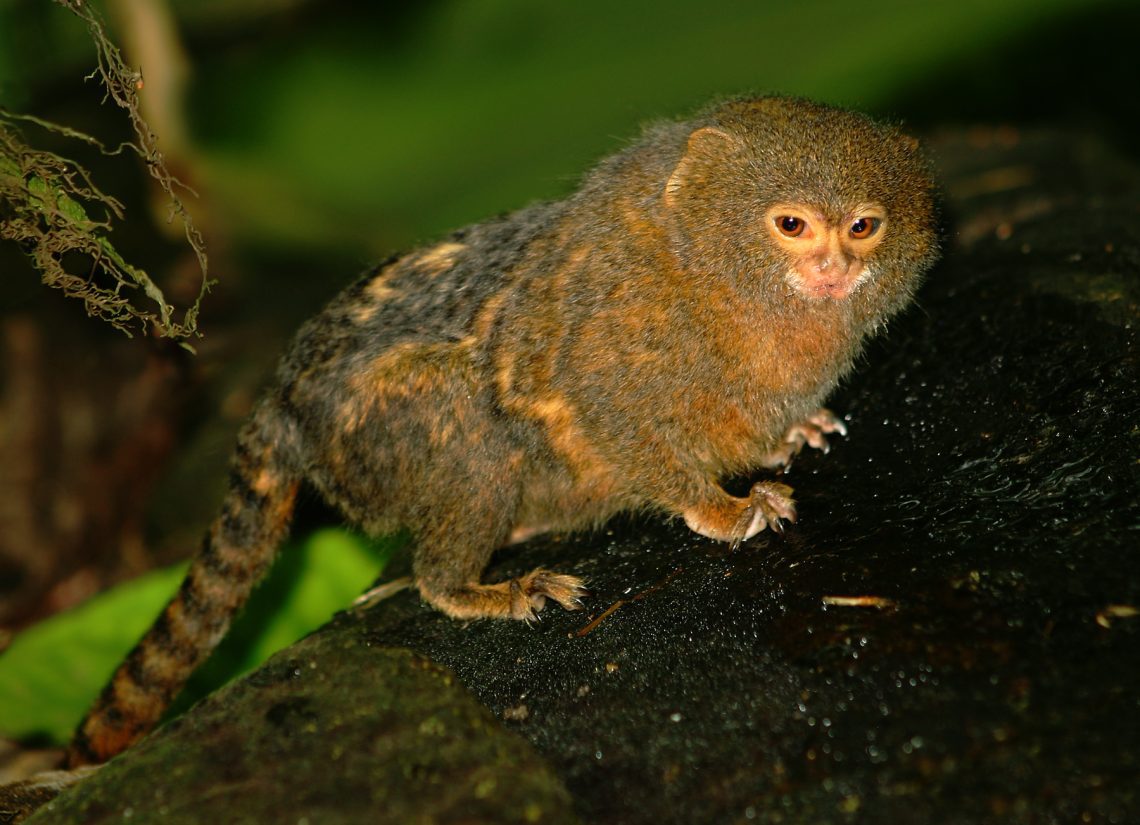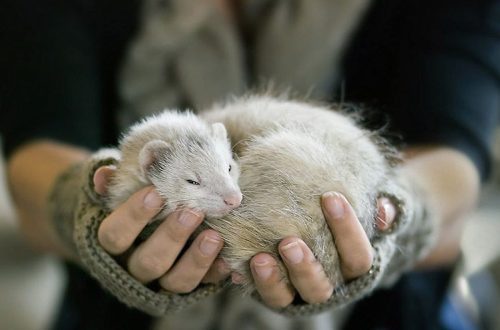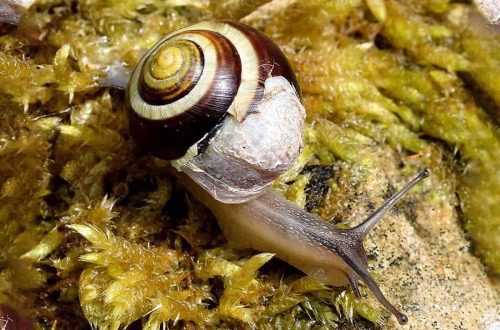
The smallest member of the primate group is the marmoset monkey.
Among primates, the smallest monkeys, marmosets, stand out as a special group. They are so tiny, their size is from ten to fifteen centimeters with a tail that is twice the length of the body. Big eyes, framed by thick hair, have a meaningful look.
The marmoset lives in the forests of the Amazon, in the upper reaches of the river. For the first time, a miniature monkey was discovered in 1823 in Western Brazil, where it borders on Peru, Colombia and Ecuador.
Contents
The life of a marmoset monkey in nature
Thick wool, which covers the entire body of the marmoset, turns into hairs on the muzzle. The ears are not visible in the thick coat, and the eyes seem more expressive framed by light circles. Small graceful bast shoes end in sharp claws. Only on the big toes instead of claws are flat nails. The coat has shades from black-brown to yellowish, with black and white flecks.
Habitat
Games lead a daily life, and at night they climb into the hollows of trees. Monkeys spend all the time on the lower tier of tropical trees, moving along the branches. Occasionally they jump to other trees, making jumps up to two meters. Monkeys live in small groups consisting of two to four adults and their children. One male is the leader of the group. Children of different ages live with their parents for several years. Pregnancy in females lasts approximately 140 days. Then two or three babies are born, who become independent after five months.
Adult males and young females help care for the babies. A day after birth, the babies “move” to the adult members of the group, returning to the mother for feeding. This division of duties allows the mother to rest and eat.
Each family of marmoset monkeys occupies a certain areawithout interfering with others. The size of the plot can cover up to one hundred acres. To protect him, the monkeys mark their territory. When encroached by other animals, they drive them away, making threatening sounds.
Nutrition in natural conditions
The basis of the diet of pygmy monkeys is the juice and gum of trees growing on their territory. With their sharp teeth, they make holes in the bark of trees and lick the juice. The gum of trees serves as a source of calcium, which is so necessary for marmosets.
They also eat fruits, but they are not enough for the whole year, since the habitat of each family is small. Also with pleasure toys eat various insects
- grasshoppers;
- butterflies;
- snails;
- frogs.
To catch the grasshoppers, the monkeys descend briefly to the ground, risking their lives.
For drinking, they have enough water, which is collected on the leaves of trees and accumulates in flowers.
Marmosets spend most of the daytime feeding, clinging to a tree trunk with sharp claws and licking the protruding juice.
Communication monkeys
In their free time they play, fast moving from branch to branch. Monkeys express their affection by combing each other with their claws.
When communicating with each other, they make sounds similar to whistling and chirping. Among their sounds there is one cry, inaccessible to the human ear and expressing hostility. Twitter is used in the peaceful communication of monkeys with each other, denoting humility. If one of the family members notices the alarm, then he makes a whistle with his mouth open. Trills with a closed mouth sound when they communicate with each other.
Marmoset Enemies
Pygmy monkeys in nature often fall prey to tree snakes and birds of prey. To protect themselves, marmosets have developed two opposite lines of behavior: display of aggression or hiding. Depending on the size of the aggressor, the animals either attack in a group, making a frightening whistle and making threatening gestures. In other cases, they hide among the foliage, freezing motionless.
But the main threat to the number of marmosets is man and his activities. Deforestation forces the monkeys to look for new places to live. They are already seen among the trees on the border of agricultural fields.
In addition, a person catches marmosets for sale, as the demand for these cute funny animals has grown significantly.
Keeping marmoset monkeys in captivity
When kept in zoos, marmosets do not tolerate other relatives on their territory, they suffer from noise and anxiety. But with the creation of favorable conditions, they can live up to 18 years in captivity. Whereas in natural conditions they do not live longer than ten years.
In their captivity the diet consists of the following products:
- fruits (apples, grapes, bananas);
- vegetables (cauliflower, peas);
- protein products (meat, fish, eggs, rice);
- mealworm larvae;
- gum syrup.
How to keep a marmoset in an apartment?
Funny cute monkeys make you want to have such animals in your apartment. If conditions permit, then for them it is necessary to equip spacious terrarium. The minimum dimensions for a couple of marmosets are one and a half meters in height and a meter in length. But the more space you can allocate to their content, the better they will feel about you. Especially when there will be offspring. For animals, it is necessary to equip ladders, put trunks of strong branches for climbing. You can put artificial plants and equip places where animals can hide and sleep at night. In general, create a small rainforest for them.
And then you will be able to watch their jumps, games and funny antics, getting incomparable pleasure. It is not recommended to release marmosets around the house because of the danger of injury or harm to them, as they will be engaged in the study of everything that surrounds them. It is necessary to exclude any possibility of escaping through windows or open doors, otherwise it will be impossible to catch them on the street, and they will die.
Also, you can’t take them out of the house, as noisy streets are a source of severe stress, which also negatively affects the health of the monkeys. If you need to consult a veterinarian, then invite the doctor home.
To accustom the animals to yourself, feed them from your hand, communicate with them during feeding. But give them time to get used to a new place of residence, and then they will bring you many fun minutes and the pleasure of watching them.
Nutrition and maintenance tips
Here are some more tips for caring for marmosets. General cleaning in the terrarium is enough to arrange once a month.
Feeding at home should include the following main products:
- daily juicy sweet fruits (pears, banana, apples, watermelon, persimmon and others), cut into pieces;
- children’s cereals with fructose;
- washed dried fruits (once a week): raisins, dried apricots;
- crickets, grasshoppers, small pieces of chicken meat;
- clean water for drinking.
On the advice of a veterinarian, give vitamins, but strictly in the prescribed dosage.
Absolutely forbidden give human food, sugar and products with sugar, chocolate. Dwarf monkeys quickly die from inappropriate food and cannot be saved.
Subject to all conditions, you will have funny pets at home that do not require much and complicated care, but give a lot of pleasant minutes from communicating with them.





